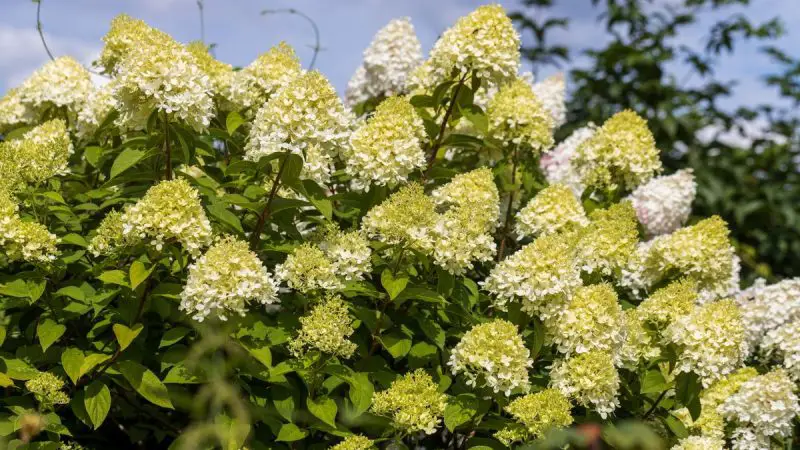Limelight hydrangeas are among the most beloved flowering shrubs thanks to their dramatic cone-shaped blooms that change color from creamy white to shades of pink and rose as the season progresses. These hardy plants are easy to grow, but to achieve the most stunning and vibrant blooms, knowing the right time to prune is essential. Pruning not only enhances flower size and color intensity but also keeps the shrub healthy and well-shaped throughout the growing season.
Timing is the key factor that determines whether your limelight hydrangea produces abundant, show-stopping flowers or sparse, underwhelming blooms. Because limelight hydrangeas bloom on new wood, pruning at the correct moment ensures vigorous new growth, which leads directly to more impressive blossoms. Understanding their growth habits and applying proper pruning techniques can transform your hydrangea into the centerpiece of your garden.
Understanding How Limelight Hydrangeas Grow

Before deciding when to prune, it is important to understand the growth cycle of limelight hydrangeas. Unlike some hydrangea varieties that bloom on old wood, limelight hydrangeas develop their flowers on the current season’s growth. This means all the buds that eventually turn into large, beautiful flower heads form on new stems that grow in spring and early summer.
This growth habit makes pruning more flexible and less risky because you are not removing pre-formed flower buds when cutting back old wood. Instead, strategic pruning stimulates the plant to produce fresh stems capable of supporting larger, healthier blooms. If left unpruned for too long, the plant may become dense and woody, leading to smaller flowers and weaker stems unable to hold the heavy flower clusters upright.
Knowing that limelight hydrangeas thrive on new wood gives you the freedom to prune them heavily when necessary without worrying about sacrificing next season’s flowers. However, the exact timing of this pruning plays a critical role in how well the plant responds.
The Best Time to Prune Limelight Hydrangeas
The ideal time to prune limelight hydrangeas is in late winter or very early spring, just before new growth begins. This dormant period is when the plant is not actively growing, making it the perfect opportunity to shape the shrub and remove any old or damaged stems. Pruning at this stage channels the plant’s energy into developing strong new shoots, which will carry large flower heads throughout the summer.
In most regions, this window falls between late February and early April, depending on climate. Waiting until the buds start swelling in spring can still work, but cutting after new growth emerges risks removing shoots that would have produced flowers. For the most stunning blooms, aim to prune when the plant is still dormant but the threat of harsh winter frost has passed.
Some gardeners also perform light pruning in the fall, mainly to remove faded blooms and prevent snow or ice from weighing down branches. However, major pruning intended to boost flower production should always wait until the dormant season. Heavy pruning too late in spring or during the growing season can stress the plant and reduce bloom quality.
How Much to Prune for Maximum Blooms
The amount you prune directly influences flower size and overall bloom quality. Because limelight hydrangeas bloom on new wood, cutting them back encourages fresh growth, which is essential for stunning flower clusters. For most plants, reducing the shrub by about one-third of its overall height is ideal. This moderate pruning method stimulates new shoots while preserving enough structure to maintain the plant’s natural shape.
If you want fewer but exceptionally large flower heads, a more aggressive cut, even up to half the shrub’s height, can concentrate energy into fewer stems, producing show-stopping blooms. However, this approach is best suited for mature, well-established plants that can handle heavier pruning. Young or newly planted hydrangeas should only be lightly pruned to avoid stressing their developing root systems.
In addition to shaping, removing old, woody stems near the base helps rejuvenate the plant and encourages the growth of stronger, healthier shoots. Younger stems are typically more vigorous and produce larger, brighter blooms than older, tired wood.
Pruning Techniques to Enhance Flower Quality
Proper pruning technique is just as important as timing. Always use clean, sharp pruning shears to make precise cuts, which reduce the risk of disease and promote faster healing. Cut stems at a slight angle just above a set of healthy buds, as this encourages new growth from that point. Removing crossing or overcrowded branches improves airflow and sunlight penetration, both of which are critical for vibrant flower color and overall plant health.
Avoid simply shearing the top of the plant, which can lead to weak, spindly growth. Instead, focus on selective pruning by removing older or weaker stems at the base and shaping the plant naturally. By thinning out the interior and opening up the plant, you allow sunlight to reach all parts, which results in more evenly distributed and brighter blooms.
Caring for Limelight Hydrangeas After Pruning
Once pruning is complete, proper aftercare helps the plant recover quickly and produce its best blooms. Feeding the plant with a balanced, slow-release fertilizer in early spring replenishes nutrients and supports vigorous new growth. A fertilizer slightly higher in phosphorus can further enhance flower production, encouraging larger and more colorful blooms.
Consistent watering during the growing season is also essential, particularly in dry spells. Hydrangeas love moisture, and keeping the soil evenly damp ensures the plant has the resources to produce full, lush flower clusters. However, avoid waterlogging the soil, as this can cause root rot and stress the plant.
Adding a two to three-inch layer of organic mulch around the base helps maintain soil moisture, regulate temperature, and suppress weed competition. Healthy, well-nourished plants respond better to pruning and reward you with a spectacular floral display.
Why Pruning at the Right Time Matters
Pruning at the correct time determines how energy is distributed within the plant. Cutting during dormancy allows the hydrangea to redirect stored energy into producing new shoots rather than maintaining old, unproductive stems. These new shoots are stronger, healthier, and capable of carrying larger flower heads.
Improper timing, such as pruning too late in spring, can remove young shoots that were already forming flower buds, resulting in fewer blooms. Conversely, pruning too early in winter, while the risk of harsh frost remains, can expose cut stems to cold damage, delaying growth and reducing bloom quality.
By pruning at the right time and using proper techniques, you ensure that the plant has the best possible start for the growing season, which directly translates into a more stunning floral display.
Common Pruning Mistakes to Avoid
One of the most common mistakes is neglecting to prune at all, which leads to overcrowded growth and smaller blooms. Over time, unpruned hydrangeas develop too many weak stems, and the plant struggles to allocate enough resources to produce large flower clusters.
Another mistake is cutting too lightly year after year, leaving too much old wood. Older stems are less productive, and removing them periodically keeps the plant rejuvenated and capable of producing vibrant flowers. On the other hand, over-pruning young plants can weaken them, delaying their ability to establish strong root systems.
Using dull or dirty pruning tools can also harm the plant by causing ragged cuts that heal slowly and increase the risk of disease. Clean, sharp shears ensure quick, healthy regrowth.
Extending Bloom Quality Through the Season
Pruning sets the stage for beautiful blooms, but consistent care throughout the growing season helps maintain their quality. Deadheading spent flowers during the summer can encourage the plant to direct energy into producing new blooms rather than seed production. While limelight hydrangeas often continue blooming without deadheading, removing faded clusters keeps the plant neat and can sometimes prolong flowering.
Providing adequate water and nutrients throughout the season ensures that the large flower heads remain bright and fresh for weeks. Protecting the plant from harsh afternoon sun in extremely hot climates can also help preserve flower color, as too much heat can cause blooms to fade prematurely.
FAQs About Pruning Limelight Hydrangeas
When Should You Prune Limelight Hydrangeas for Best Results?
The best time to prune is in late winter or early spring, just before new growth begins. This timing ensures strong new stems and larger, more vibrant blooms.
How Much Should You Cut Back Limelight Hydrangeas?
Pruning by about one-third of the plant’s height is ideal for stunning blooms. Heavier pruning can produce fewer but larger flower clusters on healthy, mature plants.
Can You Prune Limelight Hydrangeas in the Fall?
Light trimming in fall is fine for removing faded blooms, but major pruning should wait until late winter or early spring to avoid affecting next season’s growth.
What Happens If You Prune Too Late?
Pruning too late in spring can remove new shoots that would develop flower heads, leading to fewer or smaller blooms during the flowering season.
Do Limelight Hydrangeas Bloom on New or Old Wood?
Limelight hydrangeas bloom on new wood, which makes them more forgiving of pruning. Cutting back old stems encourages new growth and results in better flower production.
Conclusion
Pruning limelight hydrangeas at the right time is essential for achieving the most stunning blooms. Because these plants flower on new wood, late winter or early spring pruning stimulates healthy new growth and encourages large, vibrant flower clusters. Cutting back by about one-third, focusing on older stems, and providing proper aftercare ensures that your hydrangea produces breathtaking displays season after season.
With the correct timing, proper technique, and ongoing care, limelight hydrangeas can thrive and become a spectacular focal point in any garden. Mastering the art of pruning not only enhances bloom size and color but also keeps the plant healthy and beautiful year after year.






